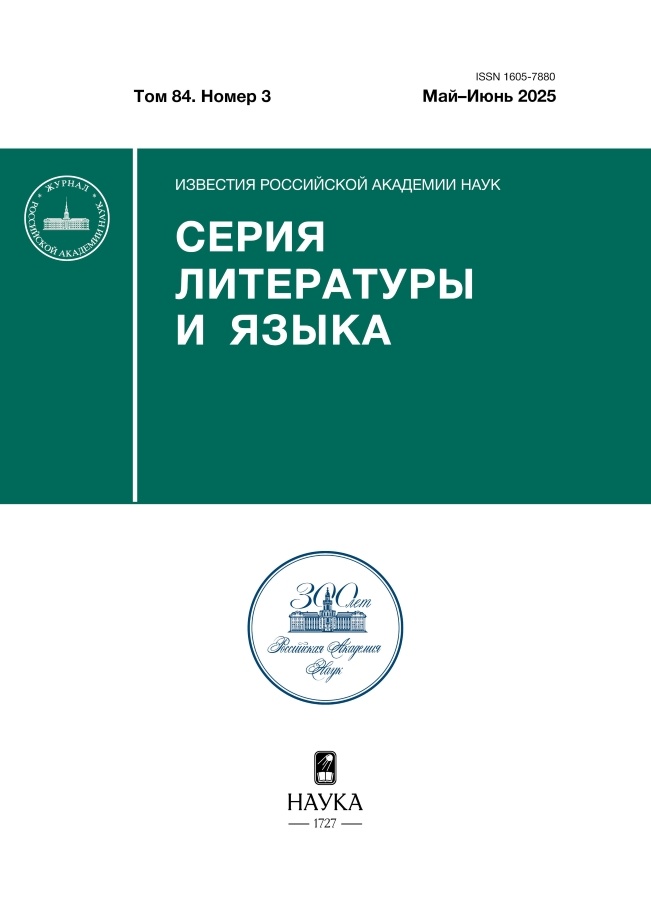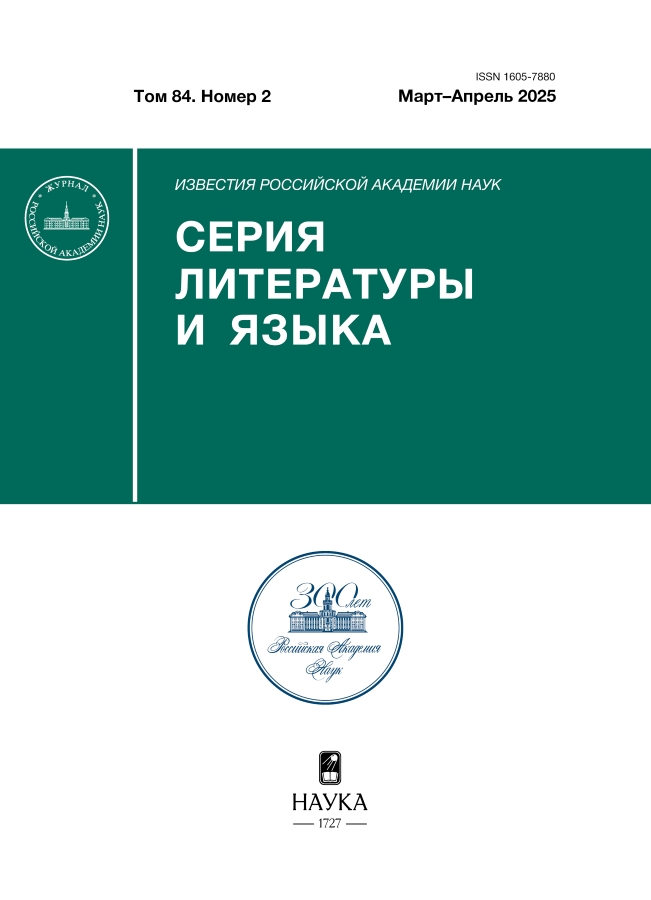Русские гекзаметрические переводы с греческого и латыни XIX–XXI вв.: ритмические варианты
- Авторы: Файер В.В.1
-
Учреждения:
- Национальный исследовательский университет «Высшая школа экономики»
- Выпуск: Том 84, № 2 (2025)
- Страницы: 33-42
- Раздел: Статьи
- URL: https://cijournal.ru/1605-7880/article/view/684271
- DOI: https://doi.org/10.31857/S1605788025020033
- ID: 684271
Цитировать
Полный текст
Аннотация
В статье анализируются «эквиритмические» переводы произведений античной литературы, написанные русским гекзаметром (разновидностью дольника). Материалом послужили тексты, начиная с «Илиады» Н.И. Гнедича вплоть до современных переводов, общим объемом 169 тыс. строк. Статистика ритмических вариантов гекзаметра позволяет сделать ряд интересных наблюдений: запрет на односложное заполнение интервала между 5 и 6 иктами соблюдается не всеми переводчиками; репертуар ритмических вариантов богаче в случае переводов с греческого; некоторые переводчики пытаются немного адаптировать ритмическую вариативность гекзаметра в зависимости от переводимого автора. Нестандартные строки в анализируемых переводах можно рассматривать как примеры дериватов гекзаметра.
Полный текст
Об авторах
В. В. Файер
Национальный исследовательский университет «Высшая школа экономики»
Автор, ответственный за переписку.
Email: vvfire@hse.ru
Кандидат филологических наук, доцент Школы лингвистики, старший научный сотрудник Школы филологических наук факультета гуманитарных наук
Россия, 105066, Москва, ул. Старая Басманная, д. 21/4Список литературы
- Шапир М.И. Гексаметр и пентаметр в поэзии Катенина (О формально-семантической деривации стихотворных размеров) // Philologica. 1994. Т. 1. № 1/2. С. 43–107.
- Гаспаров М.Л. Дериваты русского гексаметра (О границах семантического ореола) // Res philologica. Филологические исследования: памяти академика Г.В. Степанова. М., 1990. С. 330–342.
- Степанова А.И. Автоматический анализ метрики русского гекзаметра (на материале современных переводов с древнегреческого). М., 2017. (курсовая работа)
- Fayer V. Russian Hexameter in Contemporary Translations from Greek and Latin (preprint). Moscow, 2015.
- Орлицкий Ю.Б. Новейший русский гексаметр и его дериваты // Орлицкий Ю.Б. Стихосложение новейшей русской поэзии. М., 2020. С. 47–73.
- Гаспаров М.Л. Продром, Цец и национальные формы гексаметра // Античность и Византия. М., 1975. C. 362–385.
- Файер В.В. Греческий гекзаметр: метрика и фонетика. М., 2015.
- Гаспаров М.Л. Очерк истории европейского стиха. 2-е изд. М., 2003.
- Лотман М.Ю. Историческая типология русского гексаметра // Słowiańska metryka porównawcza, Т. IX: Heksametr. Warszawa, 2011. С. 82–166.
- Егунов А.Н. Гомер в русских переводах XVIII–XIX веков. М., 2001 [1964].
- Соболева М.23 О дактилопиррихическом гекзаметре // Греко-латинский кабинет. № 3. М., 2000. C. 95–99.
- Трунин М. Гексаметр и его имитация. Об одном стихотворении П. И. Филимонова // Новые oблака. Таллин, 2020. № 1–2. С. 83–84. URL: https://www.oblaka.ee/journal-new-clouds/михаил-трунин/
- Казарцев Е.В. Сравнительное стиховедение: метрика и ритмика. СПб., 2017.
- Duckworth G.E. Vergil and Classical Hexameter Poetry. A Study in Metrical Variety. Ann Arbor, 1969.
Дополнительные файлы














